Journal of Vaccines and Immunology
Nano-chemistry and Bio-conjugation with perspectives on the design of Nano-Immune platforms, vaccines and new combinatorial treatments
Luna R Gomez Palacios1, Sofia Martinez2, Cecilia Tettamanti2, Daniela Quinteros2 and A Guillermo Bracamonte1,3*
2Research and Development Unit in Pharmaceutical Technology (UNITEFA), Conicet, Department of Pharmacy, Faculty of Chemical Sciences, National University of Córdoba, University City, 5000 Córdoba, Argentina
3Department of Chemistry and Center for Optics, Photonics and Laser (COPL), Laval University (Laval University), Quebec (QC) G1V 0A6, Canada
Cite this as
Gomez Palacios LR, Martinez S, Tettamanti C, Quinteros D, Bracamonte AG (2021) Nano-chemistry and Bio-conjugation with perspectives on the design of Nano-Immune platforms, vaccines and new combinatorial treatments. J Vaccines Immunol 7(1): 049-056. DOI: 10.17352/jvi.000047Copyright
© 2021 Gomez Palacios LR, et al. This is an open-access article distributed under the terms of the Creative Commons Attribution License, which permits unrestricted use, distribution, and reproduction in any medium, provided the original author and source are credited.This Mini-Review and Opinion letter, it was addressed different themes and topics implicated in the development of new treatments and vaccines applied to pathologies developed in humans such as by Virus and related pathogens. In this context, it was presented and discussed different strategies used, which were contemplated from the design of small molecules, towards higher sized chemical structures and new Nanoarchitectures. In particular, it was discussed varied studies developed for the Corona Virus treatment; which afforded to the main mechanisms of action of pharmacophores and targeted functional Nanoparticles. In this direction, it was highlighted the importance of Bioconjugation of molecules and variable Nanoarchitectures for their incorporation within cells as well as for the development of Nano-vaccines. Moreover, it was discussed about the development of combinatory treatments based on different strategies recently reported. Similarly, it was presented different studies and developments actually in progress related to the design of functional and Multifunctional Nano-platforms with potential perspectives on Lab-On particles and Nano-vaccines for precision Nanomedicine and new treatments.
Introduction
Nano and Biotechnology could generate new alternatives and varied aspects for the development of new strategies towards vaccines, alternative, and combined treatments [1]. In this aspect, there are many developments to be achieved related from small molecules to higher molecules, synthetic Bio-molecules such as peptides, proteins, natural and synthetic oligonucleotides [2]. This future next generation of molecules should be developed within In-Vitro and In-Vivo controlled conditions for them to pass to other levels of Bio-assays looking for targeted effects.
These considerations in a general manner are intended to show and open the discussion about the multi-factorial challenge that should be developed. However, it is important to highlight that there are many existing methods focused on the treatments of varied pathologies generated for infectious agents such as Biostructures of Viruses. In this manner, it was observed the apparition of the Corona Virus from where it was begun the discussion about requirements and needs in the context of pandemia to manage the SARS CoV-2 [3]. For example, it should be considered the interaction of the receptors of the protein receptors specific for the Corona Virus action. The spiked protein involucrated showed a high interaction and adhesion with targeted cells that permits its incorporation within the Cytoplasm where new interactions are developed as well. In this way, it needs new studies related to the detection of the mechanism involucrated at each mentioned step. In this manner, it could be inferred more about its proliferation in real-time. In-Vitro and In-Vivo [4]. Thus, new pharmacophores with varied strategies would be welcomed to be proposed based on the previously mentioned different steps associated with the development of the illness [5].
In this perspective, the knowledge and know-how required to study and develop new mechanisms and pathways of Biostructures detection, tracking, blocking, degrading, modifying, and generating immune responses, was vital to design vaccines and treatments. And, there it is from where the molecular interaction knowledge should be inquired and applied for targeted recognitions with consequent responses. For example, the knowledge of the four key amino-acid interactions within the spiked protein related to different regions with varied hydrophobic domains could be modified by the mutation of the Virus with variations on the effect of the host. Similarly, the membrane of the host could be different between variable gene expressions. Therefore, the combinations between them opened additional Biological variables accompanied by different effects. And it should be explained that these variations are related to modifications of the media by aliphatic chains, neutral aromatic moieties, sulfide, thiol, carboxylic, and hydroxyl groups with varied final hydrophilic properties. Then, from these initial interactions, the cargo Biostructure could be inserted as a guest to replicate its genomic material with the use of the host Bio-machinery. In this manner, the illness could be quickly expanded and transferred as well to other living organisms. In this context, new opportunities were opened to still working on the next generation of alternative, and combined treatments, as well as new Vaccines where interactions from the molecular level towards the Nanoscale and beyond are directly related. In this direction the Nanotechnology joined to Biotechnology accompanied with high technological developments could provide faster solutions, with diminished costs and more accessibility to the whole population [6]. In this perspective, it is important to highlight the design and development of versatile Nanoplatforms to tune chemical surface chemistries incorporating varied materials accompanied with the generation of new properties applied for the desired application. For example, it is mentioned a recent publication related to tuning silica Nanophotonics based on fluorescence resonance energy transfer for targeted non-classical light delivery applications [7] In this report, it was developed Hybrid Silica Nanoparticle with the incorporation of Laser Organic dyes to modulate light emissions (Figure 1).
In the perspective to generate new alternative therapies for varied diseases could be mentioned the potential impact from developments of versatile Nano-platforms towards targeted applications such as i) non-classical light for Bioimaging; ii) tuning light delivery applications for Bio-membrane degradation, and iii) Drug Delivery applications.
Design from molecules towards Nano-vaccines for targeted action pathways
Pathways and mechanisms used as strategies to develop treatments against virus actions: In this context, as was introduced previously the control of chemical structures and Nanostructures formed of varied synthetic materials and Biological materials will be of high interest with perspectives of Nano-vaccines and combined treatments. So, from the current state of the art, it is known many pathways and mechanisms are used as a strategy to develop treatments for Corona Viruses at different levels. For example; it should be highlighted; i) the application of antibody-antigen interactions for detection, separation, Bioconjugation, labeling, and controlled drug delivery, etc.; ii) administration and use of antigens conjugated with molecules and Nanoparticles; iii) other types of structures as molecular receptor blockers; iv) applications of innocuous Viral type particles as vectors, and cargo structures; v) use of peptide and proteins as Bioconjugation agents with potential actions as Nano-vaccines; vi) developments of strategies based on nucleic acids as high Biocompatible structures associated with high interacting moieties with other Biological structures; vii) developments of targeted viral vectors to activate immune-responses as vaccines; and viii) alternative and combined treatments [8].
In all the mentioned strategies there are still existing needs and opened opportunities to take into account in future developments. In addition, it should be noted the high importance of the variable interacting Biological media that should be contemplated for the targeted developments. Thus, in this context, there are many variables to control for a given proposal approach giving alternative solutions In Vitro and In Vivo. And in this direction, the time focused at each step of the developments is vital to generate the knowledge required as well as to evaluate the different mechanisms of actions, pathways, and efficiencies for vaccine developments such as for the COVID-19 [9].
Current trends and recent developments
There are many research works related to the developments of Immuno-treatments, Vaccines, and Combinatory therapies for Corona Viruses and related illnesses with other potential Biological agents too at different phases for their applications. It could be mentioned, for example, the evaluation of neutralizing agents based on a targeted design by the use of protein structures [10], codifying RNA for the antigen of the spiked protein [11]; and application of new chemical agents, Nanomaterials, co-adjuvants [12] and combinatory treatments as well [13]. Even like that, the developments of other approaches are required to avoid negative effects generated from variations of the media in direct relation to intrinsic Biological constitution [14]. In this context there are not so many universal vaccines developed already accepted and incorporated in the market at this moment; because there are potential latent variations that could be generated from the high diversity and variability; as well as it could be generated new conditions for other illness or variants. For these reasons the Research and developments within Life Sciences in many Research fields are still being supported and permit new insights for Corona Virus treatments with improved efficiencies [15,16]. Moreover, for a given illness it should be contemplated the different levels or degrees of the advance of the targeted illness. For this reason, in this complex and multifactorial Biological event, it should be tracked the different effects and variables that are appearing and modify the effect of currently used treatments to update and improve it. For example, the potential mutations and consequent mechanism involucrated in the development of the illness [17-19]. These mutations could affect the interacting receptors, antibodies, and all membrane components of viruses for example. So, these modifications should be taken into account in the design of the new treatment. In this manner, it is possible to propose a new mechanism of action accompanied with targeted designs of molecules towards Nanoplatforms and combined Nano-formulations. In addition, it should be highlighted potential new approaches from Biotechnology based on synthetic Nano-Biostructures that could show interesting applications in this Research field too (Figure 2).
As it could be observed, in the different virus pathways exist many different recognition sites and interactions that should be accomplished to incorporate their Biostructures. In each of these sites could be focused on developing treatment. Thus, it should be highlighted the immune-modulation factor to be contemplated in this new treatment in evaluation, such as for the case of SARS-CoV-2 [20]. Similarly, it could be taken into account these recognition sites for blocking specific receptors with a consequent stop the development of the infectious illness [21]. In this way, it could be demonstrated the impact of the design and synthesis of chemical structures, Biomolecules, Bio-Nano-composites, and synthetic Nanoarchitectures. Therefore, the Biodetection, early diagnoses, and application of new treatments could be considered as a continuous activity of Research and development where fundamental and applied Researches are in close relations.
Control of the Bioconjugation factor for improved performances
Introduction to Bioconjugation and applications: From the all mentioned variables to control to develop new alternative chemical and Nano-structures, in this section, it was highlighted the importance of the Bio-compatibility to avoid immunological responses or toxicity. In this particular topic, it should be afforded to the Bioconjugation of the obtained synthetic or hybrid structures. In the majority of the cases is conjugated with biological molecules, Biological Biostructures, and derivatized structures. The basis of this importance comes from the capability to produce a Biocompatible hybrid material joining properties and functionalities only found from the combination of both materials for a given targeted objective [22,23]. However in this hybrid architecture in this particular topic, it is noted the impact of the Biocompatible part that it will be in first direct contact with the Biological media that in many cases play the role of the protective agent through the incorporation pathway for example. Moreover, the excellent properties of Nanoparticles in a variable interval of lengths could potentially modify their properties accompanied with a consequent effect. In this context Bioconjugated Nanoplatforms could be directed by natural Biological interactions; while the central Nano-core could be showing higher stability conserving their properties and targeted functionality. And, it should be mentioned that in many cases improved properties and performances could be obtained such as dispersibility, stability, augmented interactions, effect, and improved performances. So, for these reasons, there is a large variety of Bioconjugation techniques and methods developed for the incorporation of different Bio-structures [24].
In this manner, during the last years towards the advance of new technologies, it exists a continuous interest in the development of Nanomaterials for Biological Applications. In this context, Nanomedicine and precision Medicine were focused on the development of vaccines, functional devices, new dispositive of diagnoses, high resolved Imaging systems, and other invasive and non-invasive approaches for early diagnoses and applied treatments [25].
Bioconjugated Nanomaterials for enhanced properties: Many types of Nanoparticles were developed for potential Clinical applications, and biomedical uses; such as Polymeric Nanoparticles, Carbon Nanotubes, Silica, Silver, and Gold Nanoparticles, Quantum dots, and Magnetic Nanoparticles [26]. In this particular topic, it was mentioned Quantum Dots due to there is an increasing interest to apply these types of tiny Nano-materials for Bio-applications. These structures are frequently used as Nanoplatforms for drug cargo loading and delivery applications by a proper Bioconjugation depending on the targeted use. Thus, it could be improved their Bio-compatibility, Bio-availability, and Pharmacokinetics [27]. And, in this context, it is known that Quantum Dots are more or less associated with toxic effects depending on their material conformation. However, applying green chemical synthesis and Bioconjugation techniques could be led to Bio-compatible properties such as Graphene Quantum Dots [28].
Moreover, Silica based Nanomaterials showed excellent Optical properties to be tracked within Biological media with relatively low toxic effects. Therefore, it could permit to development of versatile chemical surfaces for Biophotonics and Nanomedicine applications by tuning their Nanoarchitecture design. For example, it could be noted the use of Silica Nanoparticles for vaccine protection against its degradation at room temperature [29]. So, in this perspective, it could be highlighted the Bioconjugation of Hybrid Silica Nanoparticles with Human Serum Albumin (HSA) affording to improved dispersibility within aqueous media (Figure 3). In this manner, it was converted versatile silanized chemical Nano-surfaces with variable inter-Nanoparticle interactions to well dispersible single Bio-Nano-platforms.
In this context, it should be noted the importance of the Bioconjugation for the different Nano-materials with varied applications that could afford from Biosensors towards Multifunctional Nano-platforms and Nanomedicine applications such as Nano-vaccines. Therefore, some vaccines were accepted for massive immunization by conjugation with targeted proteins against typhoid fever (Typbar-TCV® y PedaTyphTM). This development was applying the conjugation of the antigen of the polysaccharide VI with the tetanus toxoid protein [30]. Moreover, should be mentioned a recent report of a vaccine developed based on Bioconjugates that entered phase II in Cuba; where Valdes-Balbin, et al. conjugated SARS-CoV-2 RBD (as binding domains of the receptor) with the tetanus toxoid protein. This strategy produced a strong immune response in laboratory animals [31]. So, it was highlighted that even being different the Tetanus and typhus, the use of related Bio-molecules permitted improved interactions and Bio-compatibility. In this way, it is awaiting advances in Nanotechnology by developments of Bio-conjugated Nano-vaccines that could lead to improved efficiencies and effectiveness for the desired effect in comparison to previous ones already developed.
Finally, should be highlighted other strategies for vaccines developments by non-traditional strategies such as remote controlling of Magnetically-Propelled particles with Ultra-sound-assisted methods [32]; and Macro-Biostructure delivery such as Cellular membranes for targeted interactions [33], that could provide interesting approaches.
Concluding remarks and perspectives
In this communication, it was afforded to the discussion of different mechanisms and strategies involucrated in the development and evaluation of new vaccines, alternatives, and combined treatments. In this context, it was presented some examples from Corona Viruses. Thus, it was highlighted the participation of varied chemical structures for specific interactions, as well as antibodies and antigens; and other types of biomolecules such as peptides, proteins, nucleotides, RNA, and DNA, etc. Moreover, it was mentioned the importance of the design of Nanostructures contemplating Bioconjugation techniques, methods, and particular Biological structures depending on needs and applications. In addition, it was highlighted the functional and Multi-functional approach based on the different components joined that provided the final properties.
In the mentioned design it should contemplate targeted recognition sites, blocking agents, proper modification for the incorporation within membranes, cytoplasm, and organelle, smart responsive detection systems, tracking signaling. Moreover, it could be added remote smart Laser activations of varied coupled phenomena such as photonics, thermal effects, non-classical light generation and delivery, accompanied with pharmacophores delivery as well. In this context, it was noted the importance of the control from the molecular level toward the Nano-scale applied for the development of Nano and Micro-devices with potential uses within Biophotonics, Biotechnology, and Nanomedicine [34]. In this perspective, it could be mentioned the high added value, scientific, and technological interest such as the development of Nano- and Micro-syringes for delivery of Nano-vaccines based on DNA against the COVID-19 [35]. In addition, from this concept other miniaturized approaches as Lab. On Particles open new opportunities to develop new Multi-functional Nanoplatforms [36]. (Figure 4). Thus, Luminescent Nanoparticles and Micro-particles with smart responsive coupled Optical active properties for early diagnoses and treatments could be proposed by the right tuning of the targeted Nanoarchitecture [37]. And, in this just single phrase, it was incorporated many challenges that are still being waiting for further developments considering in addition of the previous variables discussed from the infective guest and the host cells. In this direction, all potential developments from Multidisciplinary Research fields could be incorporated. Thus, as it was mentioned from the beginning the design and synthesis of molecules could provide a high impact on the design of Nanotechnology if it targeted particular properties with a specific function such as Photosensitizers [38,39] with potential perspectives within Photodynamic Viral therapies [40]. Moreover, particular properties from the Nano-scale such as high Energy Electromagnetic fields from Plasmonic structures, shown by a high sensitive phenomenon such as Metal Enhanced Fluorescence (MEF) [41,42] could lead to tuneable Nanostructures with potential uses for Biodegradation of Biomolecules and Biostructures as well [43,44]. Thus, it was reported new detection and coupled treatment against the Corona Virus by Dual-Functional Plasmonic Photothermal Biosensors [45]. By this manner, then looking for controlled and confined miniaturization of technology, all these developments could be added within varied substrates and Chips; such as Micro-, and Nanofluidics Chips and devices [46,47]. For example, it was recently reported Smart labeling of self-illuminating Photosensitizers for Deep Tumor Therapy [48]. Moreover, it could be mentioned Hybrid Nano-Biostructures as Multifunctionalized biocatalytic nanoreactors for combinatory treatment of breast cancer [49]. Other similar examples could be found in literature applied for Virus and Infectious diseases as well [50]. And finally, it should be highlighted the importance of the accurate targeting of the specific action of the Pharmacophore, or Nano-vaccine due to collateral undesirable effects that could provide Neurological disorders [51]. So, all proposals are welcomed contemplating long ways for their developments and applications.
Special thanks to the Secretary of Science and Technology (SeCyT) of the National University of Cordoba (UNC), Argentina, for the research grant provided. As well especially thank Professor Denis Boudreau from COPL at Laval University, Québec, Canada, for the long-standing Research Collaboration in progress; as well as to all the Canadian Grants that permit it. In addition, it is greatly acknowledged the visit to Professor Jesse Greener Laboratory, in the Département de Chimie forming part of the CQMF (Quebéc Center for Functional Materials) and CERMA (Center for Research on Advanced Materials), at Université Laval, Québec, Canada. In similar manner, special thanks are also given to professor Valeria Amé from Centro de Investigaciones en Bioquímica Clínica e Inmunología (CIBICI), Departamento de Bioquímica Clínica, Facultad de Ciencias Químicas (Center of Clin. Biochem. and Immunology Research, Dep. of Clinical Biochem., Faculty of Chem. Sci.) UNC, Argentina. Finally, especial thanks to Professor Daniela Quinteros from Unidad de Investigación y Desarrollo en Tecnología Farmacéutica (UNITEFA) (Unit of Research and Development in Pharmaceutical Technology), at Departamento de Ciencias Farmacéuticas, Facultad de Ciencias Químicas (Dep. of Pharmaceutical Sciences, Faculty of Chemical Sci.), from UNC, and her Research Group. In particular, it is mentioned the Ph.D. student Sofia Martinez and Researcher Ph.D. Cecilia Tettamanti for the current Research work in collaboration related with Bioconjugation of Nanoparticles.
- Pelliccia M, Andreozz P, Paulose J, D’Alicarnasso M, Cagno V, et al. (2016) Additives for vaccine storage to improve thermal stability of adenoviruses from hours to months. Nature Communications 7: 13520. Link: https://go.nature.com/31tqrHZ
- Vragniau C, Bufton JC, Garzoni F, Stermann E, Rabi F, et al. (2019) Synthetic self-assembling ADDomer platform for highly efficient vaccination by genetically encoded multiepitope display. Sci Adv 5: eaaw2853. Link: https://bit.ly/31rMJdd
- Amanat F, Krammer F (2020) SARS-CoV-2 Vaccines: Status Report. Immunity 52: 583-588. Link: https://bit.ly/31lRYvg
- Zhao L, Seth A, Xia Zhao C, Mitter N, Yu C, et al. (2014) Nanoparticle vaccines. Vaccine. 32: 327- 337. Link: https://bit.ly/3pkBEmi
- Mousavi M, Tan Moriyama L, Grecco C, Saito Nogueira M, Svanberg K, et al. (2020) Photodynamic therapy dosimetry using multiexcitation multiemission wavelength: toward real-time prediction of treatment outcome. J Biomed Opt 25: 1-14. Link: https://bit.ly/3lvztLK
- Draz MS, Vasan A, Muthupandian A, Kanakasabapathy MK, Thirumalaraju P, et al. (2020) Virus detection using nanoparticles and deep neural network-enabled smartphone system. Sci Adv 6: eabd5354. Link: https://bit.ly/3DosXfQ
- Salinas C, Amé M, Bracamonte AG (2020) Tuning silica nanophotonics based on fluorescence resonance energy transfer for targeted non-classical light delivery applications. J Nanophoton 14: 046007. Link: https://bit.ly/3DosY3o
- Morse JS, Lalonde T, Xu S, Liu WR (2020) Learning from the Past: Possible Urgent Prevention and Treatment Options for Severe Acute Respiratory Infections Caused by 2019-nCoV. Chembiochem 21: 730-738. Link: https://bit.ly/3dgA4w8
- Amanat F, Krammer F (2020) SARS-CoV-2 Vaccines: Status Report. Immunity. 52: 583-588. https://bit.ly/31uAaOl
- Callaway E (2020) The race for coronavirus vaccines: a graphical guide. Nature 580: 576-577. Link: https://bit.ly/3rBL8fI
- Lipsitch M, Dean NE (2020) Understanding COVID-19 vaccine efficacy. Science 370: 763-765. Link: https://bit.ly/3dz6HWd
- Walls AC, Fiala B, Schäfer A, Wrenn S, Pham MN, et al. (2020) Elicitation of Potent Neutralizing Antibody Responses by Designed Protein Nanoparticle Vaccines for SARS-CoV-2. Cell 183: 1367-1382.e17. Link: https://bit.ly/3rAx1HE
- Jackson LA, Anderson EJ, Rouphael NG, Roberts PC, Makhene M, et al. (2020) An mRNA Vaccine against SARS-CoV-2 — Preliminary Report, The New England Journal of Medicine. N Engl J Med 383: 1920-1931. Link: https://bit.ly/3dlClGi
- Ni Q, Zhang F, Liu Y, Wang Z, Yu G, et al. (2020) A bi-adjuvant nanovaccine that potentiates immunogenicity of neoantigen for combination immunotherapy of colorectal cancer. Sci Adv 6: eaaw6071. Link: https://bit.ly/3EnyjJn
- Cohen MS, Corey L (2020) From the Editorial. Combination prevention for COVID-19, Science 368: 551-552. Link: https://bit.ly/3G9SEm7
- Drysdale SB, Barr RS, Rollier CS, Green CA, Pollard AJ, et al. (2020) Priorities for developing respiratory syncytial virus vaccines in different target populations. Sci Transl Med 12: eaax2466. Link: https://bit.ly/3G9SKdt
- Mina MJ, Andersen KG (2021) COVID-19 testing: One size does not fit all. Science 371: 126-127. Link: https://bit.ly/3lxN98V
- Ball P (2021) The lightning-fast quest for COVID vaccines and what it means for other diseases. Nature 589: 16-18. Link: https://bit.ly/3Dla2lZ
- Das S, Das S, Ghangrekar MM (2020) The COVID-19 pandemic: biological evolution, treatment options and consequences. Innov Infrastruct Solut 5: 76. Link: https://bit.ly/3xTTKzn
- Christie MJ, Irving AT, Forster SC, Marsland BJ, Hansbro PM, et al. (2021) Of bats and men: Immunomodulatory treatment options for COVID-19 guided by the immunopathology of SARS-CoV-2 infection. Sci Immunol 6: eabd0205. Link: https://bit.ly/3xR2p5A
- Rahman SA, Yagnik B, Bally AP, Morrow KN, Wang S, et al. (2021) PD-1 blockade and vaccination provide therapeutic benefit against SIV by inducing broad and functional CD8+ T cells in lymphoid tissue. Sci Immunology 6: eabh3034. Link: https://bit.ly/31tHsl8
- Elzahhar P, Belal ASF, Elamrawy F, Helal NA, Nounou MI (2000) Bioconjugation in Drug Delivery: Practical Perspectives and Future Perceptions. In: Weissig V., Elbayoumi T. (eds) Pharmaceutical Nanotechnology. Methods Mol Biol 2000: 125-182. Link: https://bit.ly/3ooLJzv
- Hermanson GT (2013) Chapter 1: Introduction to Bioconjugation.Editor(s): Greg T. Hermanson, Bioconjugate Techniques (Third Edition).Academic Press 1-125. Link: https://bit.ly/3ImrNoD
- Iriarte-Mesa C, López YC, Matos-Peralta Y, Vega-Hernández K, Antuch M, et al. (2020) Gold, Silver and Iron Oxide Nanoparticles: Synthesis and Bionanoconjugation Strategies Aimed at Electrochemical Applications, Top Curr Chem 378: 12. Link: https://bit.ly/31jm0zP
- Germanson HT (2010) Bioconjugate Techniques (Second Edition), Academic Press. Link: https://bit.ly/3luzrna
- Mabrouk M, Das DB, Salem ZA, Beherei HH (2021) Nanomaterials for Biomedical Applications: Production, Characterisations, Recent Trends and Difficulties. Molecules 26: 1077. Link: https://bit.ly/3IlhqBG
- Long NV, Yang Y, Teranishi T, Thi CM, Cao Y, et al. (2015) Biomedical Applications of Advanced Multifunctional Magnetic Nanoparticles. J Nanosci Nanotechnol 15: 10091-10007. Link: https://bit.ly/3lyvaiw
- Chul Lee B, Young Lee J, Kim J, Min Yoo J, Kang I, et al. (2020) Graphene quantum dots as anti-inflammatory therapy for colitis. Sci Adv 6: eaaz2630. Link: https://bit.ly/3EiKaIN
- Chu Chen Y, Smith T, Hicks RH, Doekhie A, Koumanov F, et al. (2020) Thermal stability, storage and release of proteins with tailored fit in silica. Scientific Reports 7: 46568. Link: https://go.nature.com/3Drr3Lk
- Lu L, Duong VT, Shalash AO, Skwarczynski M, Toth I (2021) Chemical Conjugation Strategies for the Development of Protein-Based Subunit Nanovaccines. Vaccines 9: 563. Link: https://bit.ly/3DjT9YR
- Valdes-Balbin Y, Santana-Mederos D, Quintero L, Garcia-Rivera D, Verez Bencomo V (2021) SARS-CoV-2 RBD-Tetanus Toxoid Conjugate Vaccine Induces a Strong Neutralizing Immunity in Preclinical Studies. ACS Chem Biol 16: 1223–1233. Link: https://bit.ly/3GdKjOd
- Rutkowski S, Mu L, Si T, Gai M, Sun M, et al. (2019) Magnetically-Propelled Hydrogel Particle Motors Produced by Ultrasound Assisted Hydrodynamic Electrospray Ionization Jetting. Colloids Surfaces B Biointerfaces 175: 44–55. Link: https://bit.ly/3G4fHia
- He W, Frueh J, Wu Z, He Q (2016) How Leucocyte Cell Membrane Modified Janus Microcapsules Are Phagocytosed by Cancer Cells. ACS Appl Mater Interfaces 8: 4407-4415. Link: https://bit.ly/3lv8Nuf
- Bracamonte AG (2021) Frontiers in Nano- and Micro-device Design for Applied Nanophotonics, Biophotonics and Nanomedicine. Chapters 1-15, Bentham Science Publishers. Link: https://bit.ly/3EmOqXS
- Yin Y, Su W, Zhang J, Huang W, Li X, et al. (2021) Separable Microneedle Patch to Protect and Deliver DNA Nanovaccines Against COVID-19. ACS Nano 15: 14347–14359. Link: https://bit.ly/3xQyiLE
- Ame M, Serea SA, Shalan A, Bracamonte AG (2021) Detection of Viruses and Development of New Treatments: Insights into Antibody-Antigen Interactions and Multifunctional Lab-On-Particle for SARS CoV-2. J Nanotechnol Nanomaterials 2: 67-75. Link: https://bit.ly/2ZSZA7H
- Veglia AV, Bracamonte AG (2018) Metal Enhanced fluorescence emission and Quenching protection effect with a host-guest Nanophotonic-supramolecular structure. Journal of Nanophotonics, Special Section on Nanoscience and Biomaterials in Photonics 12: 1-12. Link: https://bit.ly/3G7OB9G
- Caminos DA, Durantini EN (2008) Interaction and photodynamic activity of cationic porphyrin derivatives bearing different patterns of charge distribution with GMP and DNA. Journal of Photochemistry and Photobiology A: Chemistry 198: 274-281. Link: https://bit.ly/3Enrast
- Agazzi ML, Durantini JE, Gsponer NS, Durantini AM, Bertolotti SG, et al. (2019) LightHarvesting Antenna and ProtonActivated Photodynamic Effect of a Novel BODIPY Fullerene C60 Dyad as Potential Antimicrobial Agent. Chemphyschem 20: 1110–1125. Link: https://bit.ly/3rvTV2R
- Willis JA, Cheburkanov V, Kassa G, Soares JM, Blanco KC, et al. (2021) Photodynamic viral inactivation: Recent advances and potential applications. Appl Phys Rev 8: 021315. Link: https://bit.ly/3GcmKFE
- Gontero D, Veglia AV, Bracamonte AG, Boudreau D (2017) Synthesis of Ultraluminiscent gold core-shell Nanoparticles as NanoImaging Platforms for Biosensing applications based on Metal enhanced fluorescence. RSC Adv 7: 10252-10258. Link: https://rsc.li/3IjLFc3
- Gontero D, Veglia AV, Boudreau D, Bracamonte AG (2018) Ultraluminescent gold Core@shell nanoparticles applied to individual bacterial detection based on Metal-Enhanced Fluorescence Nanoimaging. J of Nanophotonics 12: 012505. Link: https://bit.ly/31pWs3S
- Yazdi S, Daniel JR, Large N, Schatz GC, Boudreau et al. (2016) Reversible Shape and Plasmon Tuning in Hollow AgAu Nanorods, Nano Lett 16: 6939-6945. Link: https://bit.ly/3xQ4XB7
- Jauffred L, Samadi A, Klingberg H, Martin Bendix P, Oddershede LB (2019) Plasmonic Heating of Nanostructures. Chem Rev 119: 8087–8130. Link: https://bit.ly/31uepOe
- Qiu G, Gai Z, Tao Y, Schmitt J, Kullak-Ublick GA, et al. (2020) Dual-Functional Plasmonic Photothermal Biosensors for Highly Accurate Severe Acute Respiratory Syndrome Coronavirus 2 Detection. ACS Nano 14: 5268−5277. Link: https://bit.ly/3ouHMcF
- Salinas C, Bracamonte AG (2019) From Microfluidics to Nanofluidics and signal Wave-guiding for Nanophotonics, Biophotonics resolution and Drug Delivery applications. Frontiers in Drug, Chemistry and Clinical Research 2: 1-6. Link: https://bit.ly/3lzorVI
- Palacios LRZ, Veglia A, Bracamonte AG (2021) Inflow nano-optics from the near-to the far-field detection based on Metal-Enhanced Fluorescence signaling. Microchemical Journal 169: 106539. Link: https://bit.ly/3ok1bNd
- Guo J, Feng K, Wu W, Ruan Y, Liu H, et al. (2021) Smart I-Labeled Self-Illuminating Photosensitizers for Deep Tumor Therapy, Angewandte Chemie International 60: 21884-21889. Link: https://bit.ly/3y0Qi6g
- Chauhan K, Hernandez-Meza JM, Rodríguez-Hernández AG, Juarez-Moreno K, Sengar P, et al. (2018) Multifunctionalized biocatalytic P22 nanoreactor for combinatory treatment of ER+ breast cancer. J Nanobiotechnol 16: 17. Link: https://bit.ly/3DmuqTR
- Schloer S, Goretzko J, Pleschka S, Ludwig S, Rescher U (2020) Combinatory Treatment with Oseltamivir and Itraconazole Targeting Both Virus and Host Factors in Influenza A Virus Infection. Viruses 12: 703. Link: https://bit.ly/3ly8qiQ
- Wiemken TL, Salas J, Hoft DF, Jacobs C, Morley JE, et al. (2021) Dementia risk following influenza vaccination in a large veteran cohort. Vaccine 39: 5524-5531. Link: https://bit.ly/3pt8Ho7
Article Alerts
Subscribe to our articles alerts and stay tuned.
 This work is licensed under a Creative Commons Attribution 4.0 International License.
This work is licensed under a Creative Commons Attribution 4.0 International License.
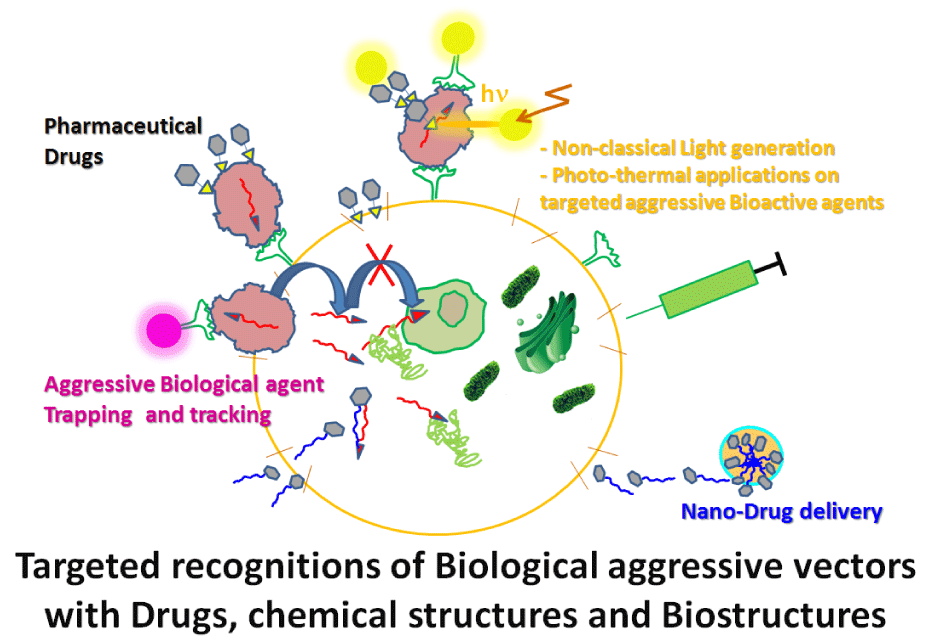
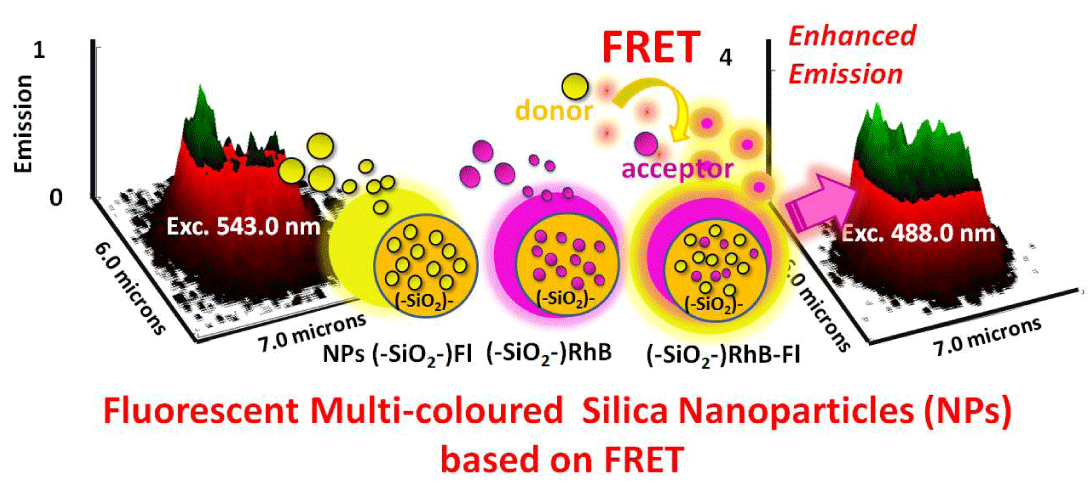
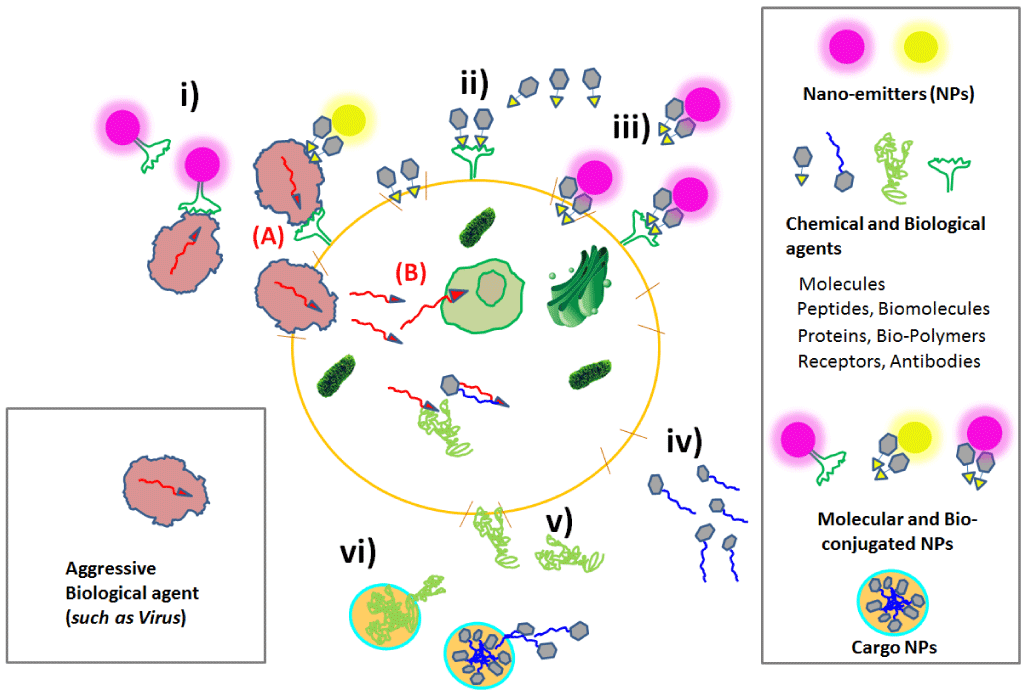

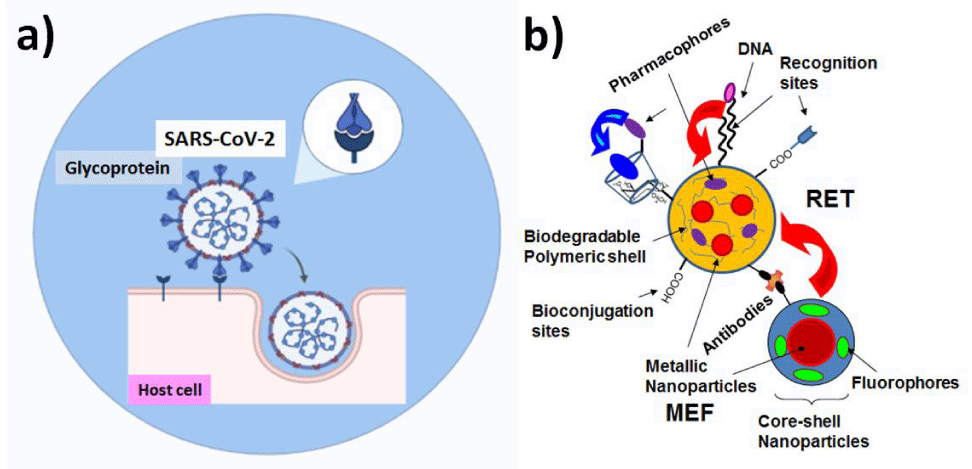
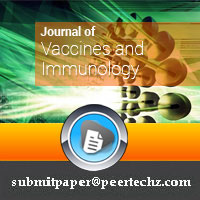
 Save to Mendeley
Save to Mendeley
